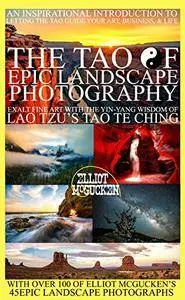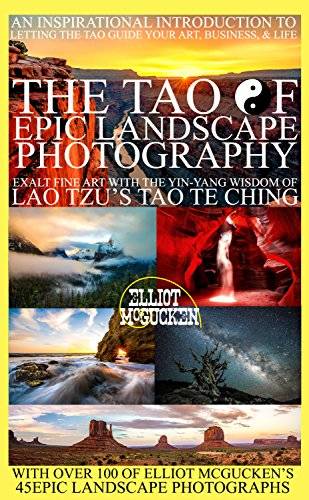The Tao of Epic Landscape Photography: Exalt Fine Art with the Yin-Yang Wisdom of Lao Tzu's Tao Te Ching: An Inspirational Introduction to Letting the Tao Guide Art, Business, and Life by Dr. Elliot McGucken
English | 30 Oct. 2016 | ASIN: B01M6B1RMQ | 354 Pages | AZW3/MOBI/EPUB/PDF | 96.1 MB
English | 30 Oct. 2016 | ASIN: B01M6B1RMQ | 354 Pages | AZW3/MOBI/EPUB/PDF | 96.1 MB
For the past five years, award-winning physicist Dr. Elliot McGucken has traveled thousands of miles with a tattered copy of the Tao te Ching he first picked up while hiking the John Muir Trail several years back. Since then, the Tao has mentored him on countless landscape photography trips through Yosemite and the High Sierras, across Death Valley, throughout the Colorado Plateau and Grand Escalante Staircase, and on all the beaches of his wanderings. While working on more technical books on landscape and portrait photography, Dr. E realized he had to pen this one first, as “the Tao leads all.”
The Tao teaches, "There is nothing in the world softer and weaker than water, and yet for attacking things that are firm and strong, there is nothing greater."
The Tao exalts in the higher excellence of water, which although softer than rock, masters and shapes rock via its pliable persistence. Water carved the magnificence of Bryce Canyon, Zion, and the Grand Canyon. Water exalts the beauty of the epic seascape, shaping the shoreline and sculpting the seastacks. Water gives life to the spring desert wildflowers, and it blankets Yosemite with its magical whiteness in the winter. The trees, cacti, and wildlife all follow the water’s lead. Water forms the clouds which deliver the lightning and thunder, and too, the same water which created Noah’s flood also delivers the promise that it will never happen again in the form of a majestic rainbow. And the Tao teaches us to be like water—to keep on keeping on in our humble persistence, as we seek not to conquer nor dominate nature, but to become one with her so as to best capture, preserve, share, and serve with her essence.
When we photograph the Zion Narrows, we follow the water’s path. When we shoot Antelope Canyon or the Badwater Basin in Death Valley, we follow the water. When we photograph the magnificent ocean’s crashing waves, we follow every river and stream on down towards it. Landscape photography is dominated by the Tao, and we artists can benefit vastly from studying this ancient Chinese philosophy which sprang forth circa 400 BC and heavily influenced Chinese Buddhism and Zen.
The Tao teaches that, "The Tao that can be described is not the enduring and unchanging Tao." The Tao is that which cannot be named.
"Tao" means "the way." "te" means "virtue" or "excellence" in the arts. And "ching" means "great book" or "classic." Thus the Tao of Epic Landscape Photography offers a way towards virtue and excellence in the art of landscape photography. But too, the book also acknowledges that the Tao—the way—cannot be named, and it invites the reader to find their own epic path. The Tao teaches that there is no single “right way” to pursue art, and the moment a photographer tries to set down the "rules of composition," they have lost the Tao.
The Tao teaches that those who know the Tao do not speak of it. And those who speak of it do not know it. And thus Dr. E enlists over 120 of his landscape photographs to help tell the greater story of the Tao and the subtle art of composition. He can show you the doorway to the Tao, but you, and you alone, must walk through it.
As the Tao exalts in the ineffable, ethereal mysteries of nature and existence, it is ideally suited to guide and inspire not only the landscape photographer and artist seeking to capture and depict nature, but every artist. This book also contains a full translation of all 81 verses of the Tao te Ching (the second most-translated book in the history of the world, after the Bible), each following one of Dr. E’s photograph and commentary, and it thus serves as a wonderful introduction to the Tao for not just photographers, but for all. For there is no better complimentary material to the Tao than nature herself.



